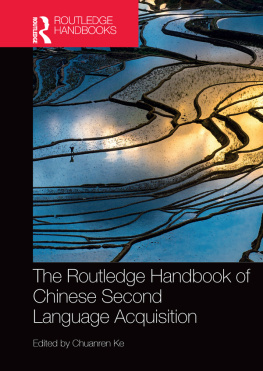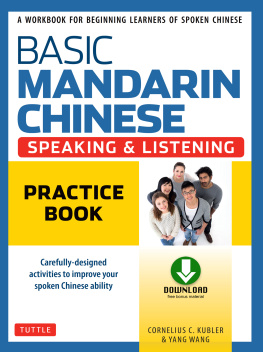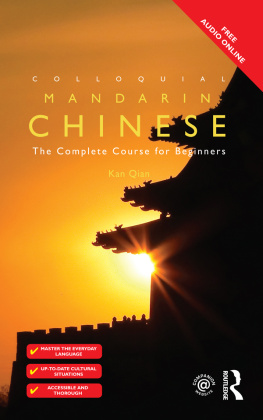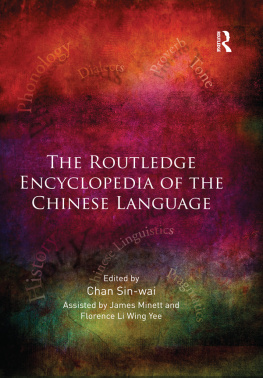The Routledge Course in Chinese Media Literacy
The Routledge Course in Chinese Media Literacy is aimed at lower advanced level students of Mandarin who wish to build media literacy in the Chinese language.
The book is written by university professors who have hands-on experience as media professionals. It gathers newsworthy authentic materials on topics covered by reporters on a day-to-day basis, and makes them accessible through pre-reading exercises, grammatical analysis, vocabulary associations, and research training for language learners.
From front page headlines to business, education, crime, and sports and entertainment, the student reader will be exposed to the full scope of news coverage and become familiar with their presentation in a Chinese context.
A companion website with audio, video, accompanying materials and a traditional Chinese edition is available at www.routledge.com/cw/li.
CHRIS WEN-CHAO LI is Professor of Linguistics at San Francisco State University.
JOSEPHINE H. TSAO is Lecturer of Chinese at San Francisco State University.
The Routledge Course in
Chinese Media Literacy
Simplified Chinese Edition
Chris Wen-chao Li and
Josephine H. Tsao
First Published 2016
by Routledge
2 Park Square, Milton Park, Abingdon, Oxon OX14 4RN
and by Routledge
711 Third Avenue, New York, NY 10017
Routledge is an imprint of the Taylor & Francis Group, an informa business
2016 Chris Wen-chao Li, Josephine H. Tsao
The right of Chris Wen-chao Li and Josephine H. Tsao to be identified as authors of this work has been asserted by them in accordance with sections 77 and 78 of the Copyright, Designs and Patents Act 1988.
All rights reserved. No part of this book may be reprinted or reproduced or utilized in any form or by any electronic, mechanical, or other means, now known or hereafter invented, including photocopying and recording, or in any information storage or retrieval system, without permission in writing from the publishers.
British Library Cataloguing in Publication Data
A catalogue record for this book is available from the British Library
Library of Congress Cataloging-in-Publication Data
Names: Li, Wen-Chao, 1968- author. | Tsao, Josephine H., author.
Title: The Routledge course in Chinese media literacy: Simplified Chinese
edition / Chris Wen-chao Li, San Francisco State University; Josephine H.
Tsao, San Francisco State University.
Description: Milton Park, Abingdon, Oxon; New York: Routledge, NY [2016] |
A companion website with accompanying practise materials, audio, video and
instructor resources is available from Routledge.com. | Includes
bibliographical references and index.
Identifiers: LCCN 2015037423| ISBN 9781138191136 (hardback: alk. paper) |
ISBN 9781138191150 (pbk.: alk. paper) | ISBN 9781315630533 (ebook)
Subjects: LCSH: Chinese languageTextbooks for foreign speakers
English. | Chinese languageStudy and teachingEnglish. | Chinese
languageSimplified characters. | Chinese languageSound recordings for
English speakers. | Media literacyStudy and teaching. | Mandarin dialects.
Classification: LCC PL1129.E5 L5 2016 | DDC 495.1/82421dc23
LC record available at http://lccn.loc.gov/2015037423
ISBN: 978-1-138-19113-6 (hbk)
ISBN: 978-1-138-19115-0 (pbk)
ISBN: 978-1-315-63053-3 (ebk)
Typeset in Helvetica
Publisher's Note
This book has been prepared from camera-ready copy provided by the author.
Contents
By FREDERIK H. GREEN
China is country of newspapers. The country not only boasts the world's largest market for daily papers, with roughly one hundred million copies sold every day, it also holds the record of newspapers in circulation: In 2012, there were almost two thousand! If one adds the dozens of daily papers published in Taiwan, the newspapers published in Hong Kong, and Chinese-language papers printed in the United States or Europe, the sheer immensity, complexity, and diversity of Chinese-language news media begins to become apparent. For students of Chinese language and culture wishing to familiarize themselves with current affairs and contemporary culture of today's Chinese-speaking world, there is no better way than through its rich media landscape.
If journalism in China used to be closely associated with official party organs, such as the Peoples Daily or China Youth Daily whose main role was the dissemination of orthodox political thinking and the views of the Chinese Communist Party (CCP), the role and form of journalism in contemporary China has changed dramatically over the past decades. The emergence of a well-educated, largely urban middle class that is enjoying rising incomes and standards of living has fueled the demand for news while the commercialization and partial de-regularization of the press have led to the sprouting of new papers and online news portals. And while the press in mainland China remains subject to censorship, journalists have become bolder in their reporting styles as readers have grown indignant over their country's social ills, such as rampant corruption or food safety scandals. New regional papers, such as Beijing's New Capital Daily or Guangzhou's Southern Weekly have become trusted sources of in-depth reporting. At the same time, readers turn to newspapers for entertainment or for guidance in matters such as education, health, or the stock market.
In Taiwan, newspapers have seen a similar transformation While prior to the lifting of the martial law in 1987, newspapers were under the strict control of the authoritarian Nationalist (KMT) regime, the press in Taiwan has since transformed itself into one of the freest and most vibrant in Asia. Newspapers whether established ones, like the China Times and United Daily News , or relative newcomers, such as Liberty Times play an important role in keeping checks on government institutions and elected officials. They also impact public opinion on sensitive political issues, from cross-straits relations to weapons deals with the Unites States. And like elsewhere, newspapers in Taiwan provide celebrity gossip and current affairs columns.
Despite its relatively small size and population, Hong Kong remains a major center for Chinese-language news publications. Capturing roughly 60 percent of the market, Hong Kong's Apple Daily is a sensationalist tabloid with a pro-democracy inclination. Ming Pao , on the other hand, is a more highbrow publication known for its critical columns that comment on political and cultural life in Hong Kong and greater China. Once envied for its freedom of the press unrivaled in the Chinese-speaking world, Hong Kong's media landscape has not remained unaffected by the return of sovereignty over Hong Kong from the United Kingdom to China in 1997, leading at times to self-censorship on issues concerning China or clear political alignment among papers. Finally, Chinese-language publications from outside the Chinese-speaking world, such as the Chinese version of the New York Times or Chinese news by the British Broadcasting Corporation (BBC), provide an additional angle on the political and cultural life in today's Chinese-speaking territories.
Gaining media literacy in Chinese is hence essential for students trying to understand or decipher the political and cultural environment in today's Sinophone societies. While the internet has made it easier for students to gain access to original news sources, as all important Chinese-language newspapers now have an online presence, reading a Chinese newspaper remains a challenge for even advanced learners This is especially so because Chinese journalists tend to make use of a professional jargon that is characterized by extreme brevity and conciseness that at times is reminiscent of the classical written language or wenyan (). Even in mainland China, where official newspapers typically employed only a limited number of the most frequently used 3,500 characters in order to make printed news accessible to a general public with varying literacy levels, journalists are once more adopting a more elegant and complex reporting style that frequently results in neologisms, new acronyms, or use of grammatical patterns that students with little or no prior exposure to Chinese newspapers find difficult to absorb.

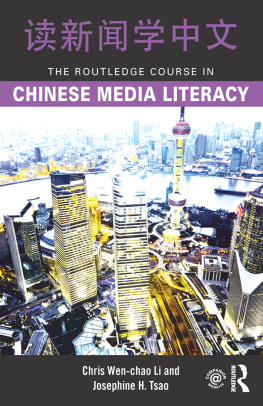

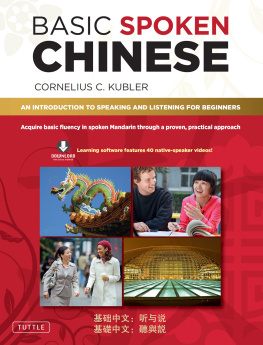

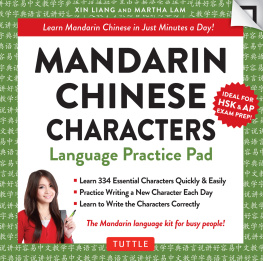
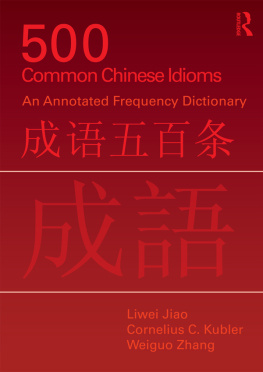
![Yi Ren - Mandarin Chinese for Beginners: Learning Conversational Chinese / Mastering Conversational Chinese [Book]](/uploads/posts/book/146887/thumbs/yi-ren-mandarin-chinese-for-beginners-learning.jpg)

